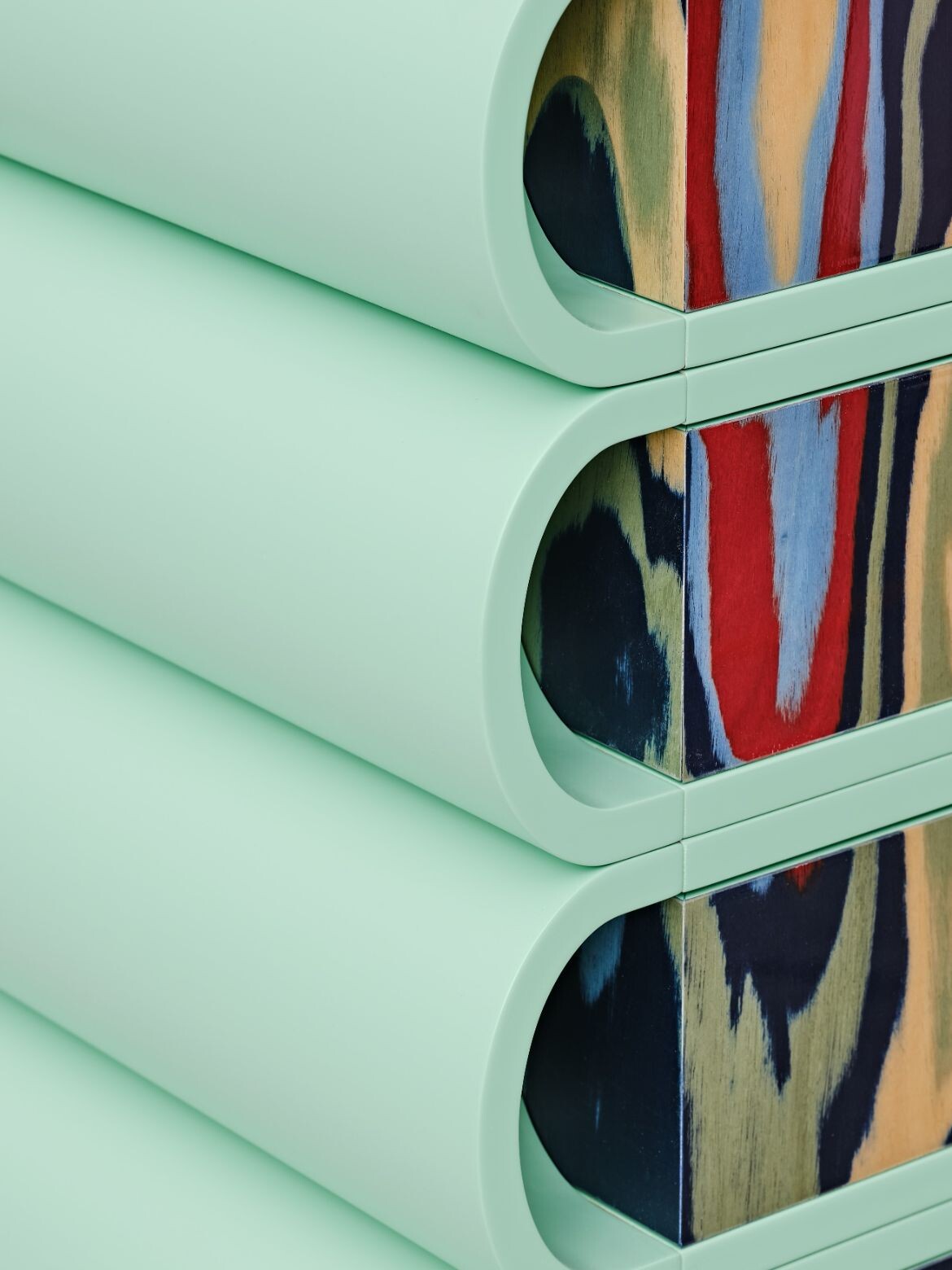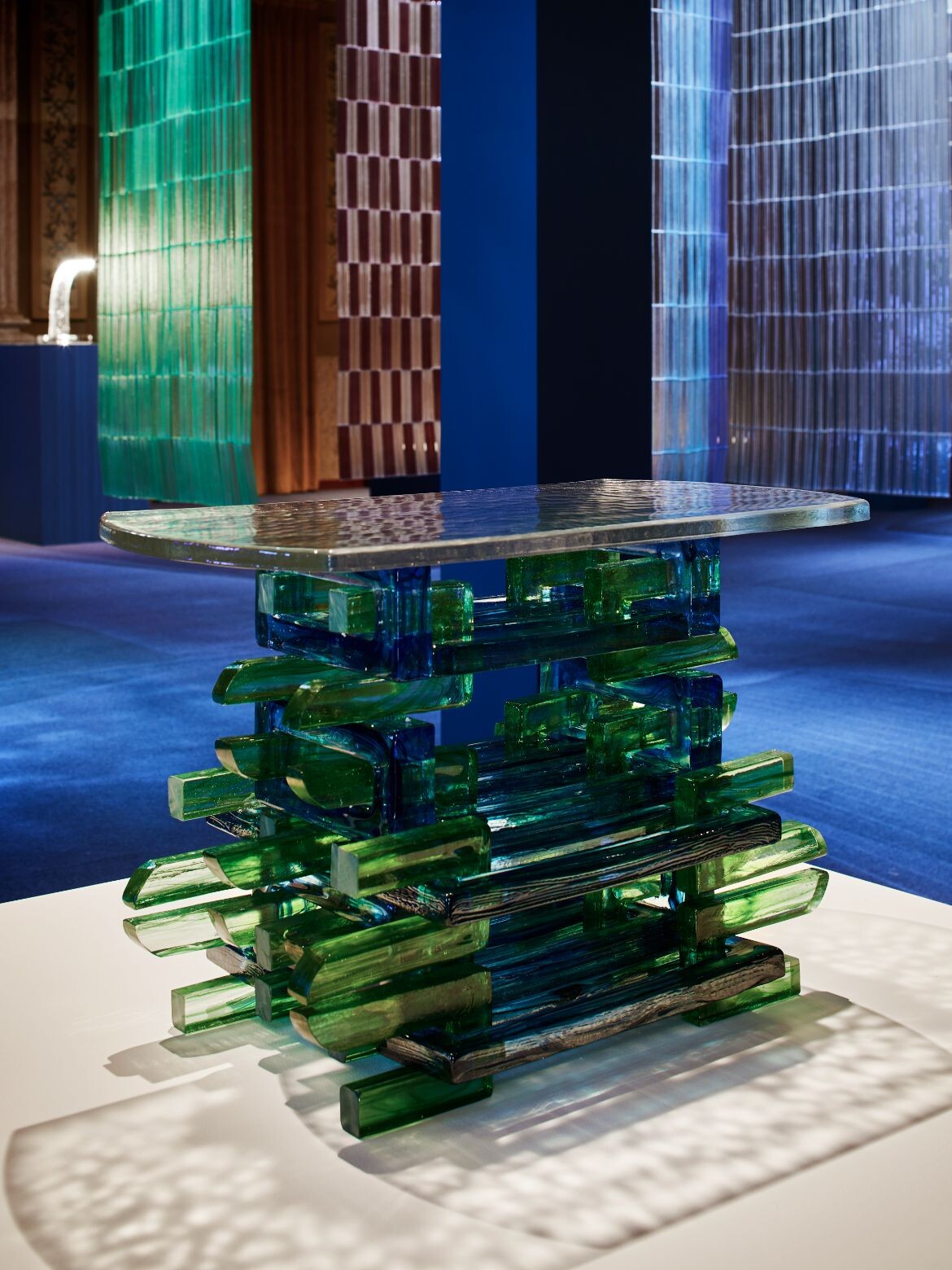Returning from Italy, where new colourway glass works by Bethan Laura Wood were exhibited for Venice Glass Week, David Congram spoke with the designer about her major new works underway in Australia, the importance of travel to her practice, the roles of museums in democratising contemporary design, and finding a new mediation between artisanal craftsmanship and industrial markets.
David Congram (DC): Congratulations on receiving the MECCA X NGV Women In Design Commission. You’re the second recipient of this five-year project. I imagine you’re quite far along in developing the work now.
Bethan Laura Wood (BLW): Thank you – it has been a very, very interesting project for me, from developing the brief as well as the research and development stages.
It all started a few years ago when I was at a dinner for Formafantasma‘s new studio in Milan. I happened to be sitting next to Ewan McEoin from the National Gallery of Victoria (NGV) and after chatting away all night, a few weeks later, I received an email from him to connect me with Simone LeAmon and the rest of the team. They thought I would be a great fit for the Women In Design commission, a project with MECCA focused on improving the representation of women in the arts, and more specifically improving female representation in the NGV by adding contemporary works to the permanent collection.
I was invited to contribute to the British Regency Rooms which holds the eighteenth- and nineteenth-century works, from the UK.
DC: I imagine that this is an intriguing period to work with, especially if you are researching women as both makers and subjects of creative works. The Regency appears to present a lot of paradoxes about the roles played, let alone the agency afforded, to women.
BLW: That’s exactly why the final work I am creating is based on the idea of a Bluestocking salon. It’s a kind of library room – or, a semi-domestic space – emerging at this time. But it’s one that was specifically centred around the idea of women gaining and sharing knowledge.
In my research, I really wanted to find more female voices.
There’s one woman’s story that really stuck with me – Jane Wells Webb Loudon – who was particularly interested in the micro-universe, mostly botanical. This was the time when the microscope was relatively new, so the uptake of this technology wasn’t quite dominated by the establishment, or even just men, just yet. She was one of the early female adopters of this subject and published many books encouraging women into the botany universe. I enjoyed how she opens by explaining to women that they can learn about botany without needing to know the posh scientific names from Linneaus, using instead things like visual learning to connect the system names. I love the way she tells this story. She learned by noticing particular shapes repeating across flowers, and noted that this occurrence would indicate a certain species. That was her way in.
Her way of sharing this really appealed to me because, as someone who is dyslexic, I learn through a combination of visual and audiovisual cues. A big part of the installation celebrates this.
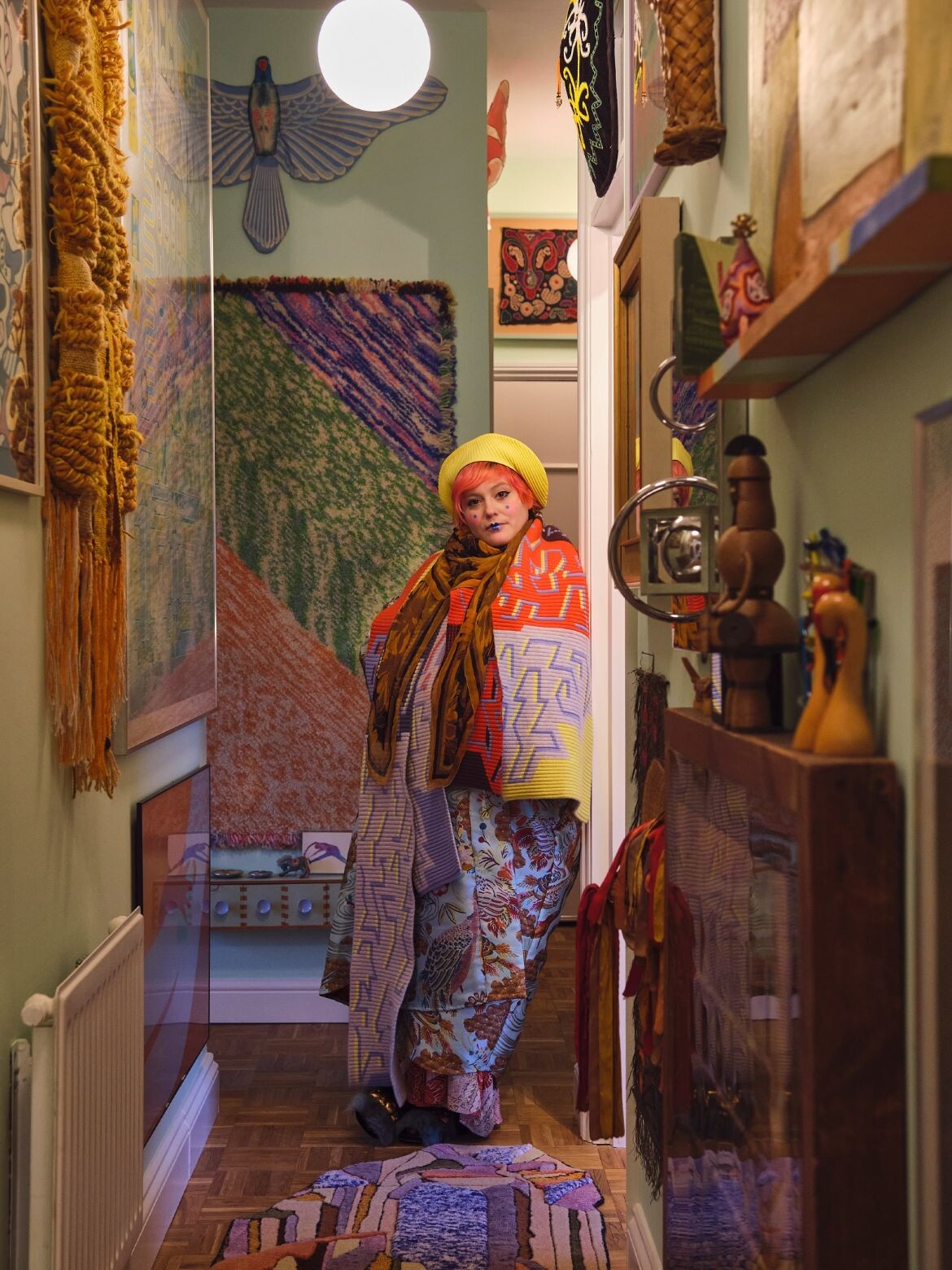
DC: It also frames material culture as an important aspect of this knowledge sharing, no? In the museum context this says profound things about the process of collecting. I know that you, yourself, are a collector, but how do you see this inform your creative practice at large?
BLW: It is definitely becoming more and more combined. Collecting gives me a lot of joy, but sometimes, this can be very challenging. I find it hard to break or dismember things I collect in order to make new work from those parts. I cherish the things as themselves.
Now I notice more and more that I am referencing in my creative practice – little objects or features or even just nods to different locations I have visited. Sometimes there might be a very obvious relationship between an object I have collected and the final piece that results. Other times, it is more abstracted – you wouldn’t know unless I pointed it out and said “look at this small area, that’s informed here and here,” for instance.
Collecting is something I have always loved to do. And I suppose this commission for the NGV is an object purpose-built for collecting, to house other objects, predominantly books. We will showcase it with a nod to books that are in my personal collection. I personally love those bookcases that hold an array of books alongside other objects – and that is something very resonant with my work: the idea of different objects being pulled together to create a new thing.

DC: So you are a collector, but you also now have an institutional following, and are yourself collected. Many of your works are being acquired by museums, and even more for private collections. What are your thoughts on the fate of these pieces? Many of them will never be ‘used’, per se, according to your original design intent.
BLW: I find it actually really interesting. For me, having a piece within a collection – especially if that piece is about the world of design and not ever meant to be mass produced – is great because it allows for a wider audience access, without having to contribute to landfills.
That’s one side of the idea of being collected by institutions which I really like. I think it is important to find ways for an audience to digest new works, especially if those pieces are made in such a way that they abstract the industrial into a one-off.
DC: That is a recurring theme in your practice – the transformation of industrial elements into one-off finished pieces. I recall an early project of yours, the teacups…
BLW: Ah yes, that is a very early work! Actually, it was a kind of tipping point for me.

The Stained Teacups seemed to attract a lot of attention from companies wanting to mass produce the project. I was constantly being asked for graphics. “Can we do pictures? Or make ‘I love you’ appear?” I lost track of how often I was asked that question! But it was an interesting reckoning point because it meant I had to make a conscious choice about what the point of the project was.
Some of my projects – or some of my concepts – work fine in mass, but some lose their purpose. Especially early on, it can be difficult to find the right balance or have the confidence to decide when it is appropriate for something to go from the kernel of what you might design as a student to what can then become mass.
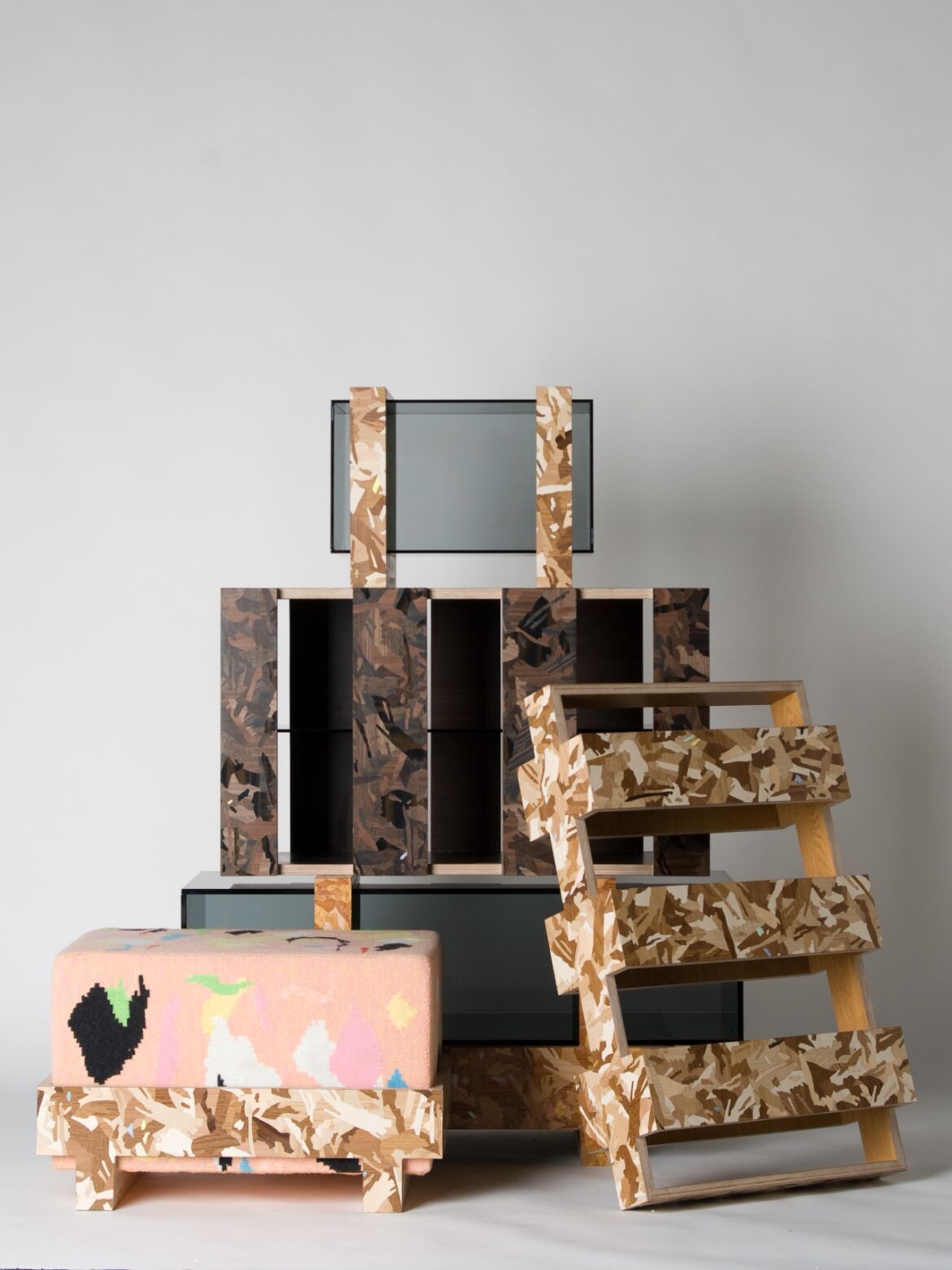
DC: It seems to me that your interest in research and, particularly, how you work with institutions is a pretty happy marriage. For institutions like the NGV, or indeed a great many others in your back catalogue, there is a shared interest in exploring certain ideas surrounding design.
BLW: Yes, and especially where the context of the output also makes sense for the work.
When I had just graduated, for instance, I was invited by the Design Museum in London to create a new work. At the time, the Museum was located in an old banana warehouse in Butlers Wharf, one of those areas by the river which used to be highly industrialised but has since been very gentrified – it’s now all architecture studios and bougie loft conversions.
I ended up making these very intricate marquetry pieces from all the faux woods of the packing and freight industry which contributed a lot to these sites. There was no way I could have afforded to do that outside of an institution or residency program. I still think about all of that hand application! I think it is still some of the most intricate marquetry I have done.

DC: Did you have to make that choice in your early practice? To go down the path of institutional commissions or industrial design, and not look back?
BLW: You often hear designers say this, and students too. But, for me, I have always tried to work within a balance. I never wanted to only make work that lives in an institution, and I also didn’t want to go down the path of becoming an industrial designer. For me, I never felt that my work needed to be validated by making it at volume – but I also was intrigued by working at volume.
For me, it’s always about being correct to context.
Look at this NGV commission, there is a great deal of it which abstracts from the realm of mass production. I have created an array of veneers roughly book-sized with an industrial partner ALPI, because it allows me to extract an element of the industrial process without complicating the fabricator’s system which they need to run in order for manufacture to be feasible. Here I have had a lot of fun with abstracting the mass without disowning it completely – I’ve recognised its context, worked within it, and found new ways to express it.
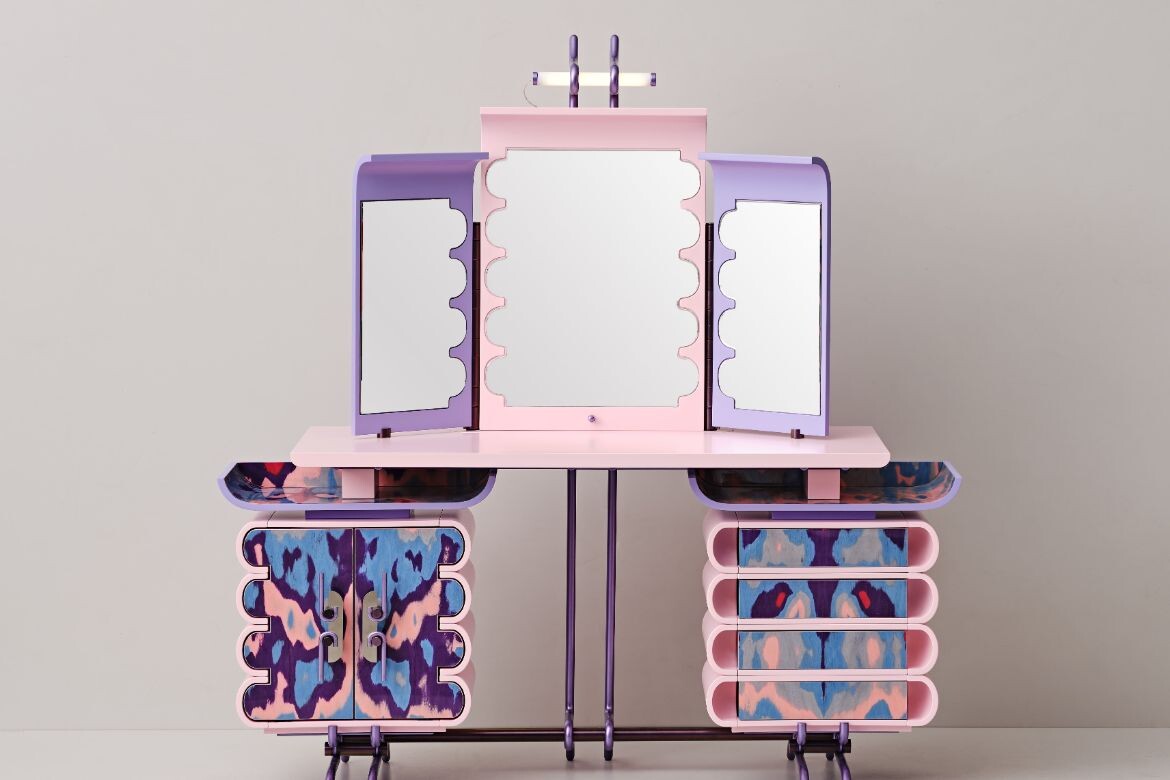
Surprisingly, I have encountered this a lot in the NGV project. The Regency is really right at the beginning of when mass production is almost at full-throttle. There was much anxiety but also joy and excitement around developing big machines to achieve this – and, I feel, it really captured popular imagination.
The machine I am using to create the veneers was actually patented by a man and woman around this time – like a big pencil sharpener that shaves and unravels a big trunk of timber. As soon as I discovered this, I just had to incorporate it somehow.
There are many wormholes that people can go down while looking at the work, and if they don’t want to go down any of them, hopefully, there is a nice piece of work they can enjoy for the visuality and nothing more.
DC: Well, one of those wormholes is definitely the cosmopolitan spirit of the installation. The period is characterised by Imperial expansion, but also by a burgeoning middle class with an appetite for products and materials from beyond the British Isles. In this historical context, the blending of international design vernaculars is now rightly seen as a major contributor to the colonial project.
But from a more contemporary context, your work is often celebrated for its blending of international influences. How difficult is it to balance those international influences and still retain a sense of authenticity – if not, respectfulness?

BLW: It is a very fine tightrope, that’s for sure. I focused this commission on the role of women and knowledge-sharing, rather than colonial expansion. The NGV did a recent and quite exhaustive exhibition on colonialism in the early nineteenth century, so after speaking about this exhibition with the curators, we decided to focus my installation on a different perspective on the period – one that resonates with me as a British woman but also as a designer being commissioned.
But if I look at the role of travel and collecting in my work, like we spoke about earlier, I hope that my use of these international influences is viewed as celebratory rather than oppressive. I always try to make sure I am clear with the original sources of reference that I am drawing from and where possible to work with an element of local production.
I think this comes from how I do a lot of my work – through observation, through my interaction with the physicality of the environment.
DC: There is certainly an element of rootedness to each individual piece in your portfolio – even if the portfolio itself has a kind of rootlessness.
BLW: It is hard for me to understate the importance of place in the development of my work. A lot of my early works while at the Royal College of Art were based on London – which is already quite a cosmopolitan city. It’s impossible to avoid international influences. I worked a lot in laminates, which is a very East London material you see everywhere – laundrettes, betting shops, takeaways, always in communal spaces. It’s a material which arrives to mass taste via the confines of certain companies picking which patterns or colours were in season for a two- or three-year period.

Directly after, I was invited to go to Italy, to Venice, where as a group we requested make work with the artisans specifically about the location.
When I was little, my family didn’t regularly travel beyond going to Wales or Scotland for summer holidays, only once or twice venturing to Europe. So, going to live in Venice for three months, being surrounded by such a different sensitivity to colour – the way in which colour lives in that space, the way it is wet and worn, its specific tonality – I became really fascinated by these differences of environment.
I became interested in the way colour relates to its context – why there are certain London colours and certain Venice colours, for instance.
Even though it is a very different place, when I went to Beirut, I was reminded of this textural quality I loved in Venice. Beirut is weathered by light and heat – a dry weathering – whereas, in Venice, the weathering is via water. When I was invited to create work about Mexico City, that smorgasbord of colour made me realise that it could be something entirely different again. That trip had a big effect on my use of colour. You can really see the difference in the work before and after visiting Beirut.
When and where I have been given permission to make work about a place, in conjunction with local craftspeople, my method is quite similar to the way I collect objects. I rarely use the physical object to make the work, and when I go somewhere and want to make a new piece, I choose to reference something or be inspired by something, rather than making work which is a substitute for the real thing.

Hopefully, it is something that permits a way for people to learn about what influences me, or prompts them to go and then buy that textile, because the textile I have made is not trying to replace it. It is something else.
I hope that is what characterises my work: that it acts as a companion rather than a threat to the actual artefacts and skills of a particular region.
DC: You’ve mentioned Venice quite a lot. It’s clearly an important place in your development as a designer. And, as I understand, you continue to work with many collaborators there.
BLW: Yes. In fact, I recently re-editioned a piece called Chain with WonderGlass, which was released for Salone del Mobile earlier this year, and is currently being exhibited by them for Venice Glass Week. In this exhibition, there is a lot of focus on the development of the work, which has a really interesting history.
This new version is called Laguna Chain because it references the seaweeds in Venice’s canals. I think I like it even more than the original because it has a finer blend of these references.
Initially, when I was invited to create this piece, we looked into some of the ways they make glass, the techniques WonderGlass’s glassmakers have access to. I really wanted to explore cast glass, which is a much more solid way of working with this medium, and was very different from the Pyrex glass I had worked with predominantly alongside Pietro Viero. I had also worked in blown glass earlier with Cassina, so I was inspired to discover a new direction.
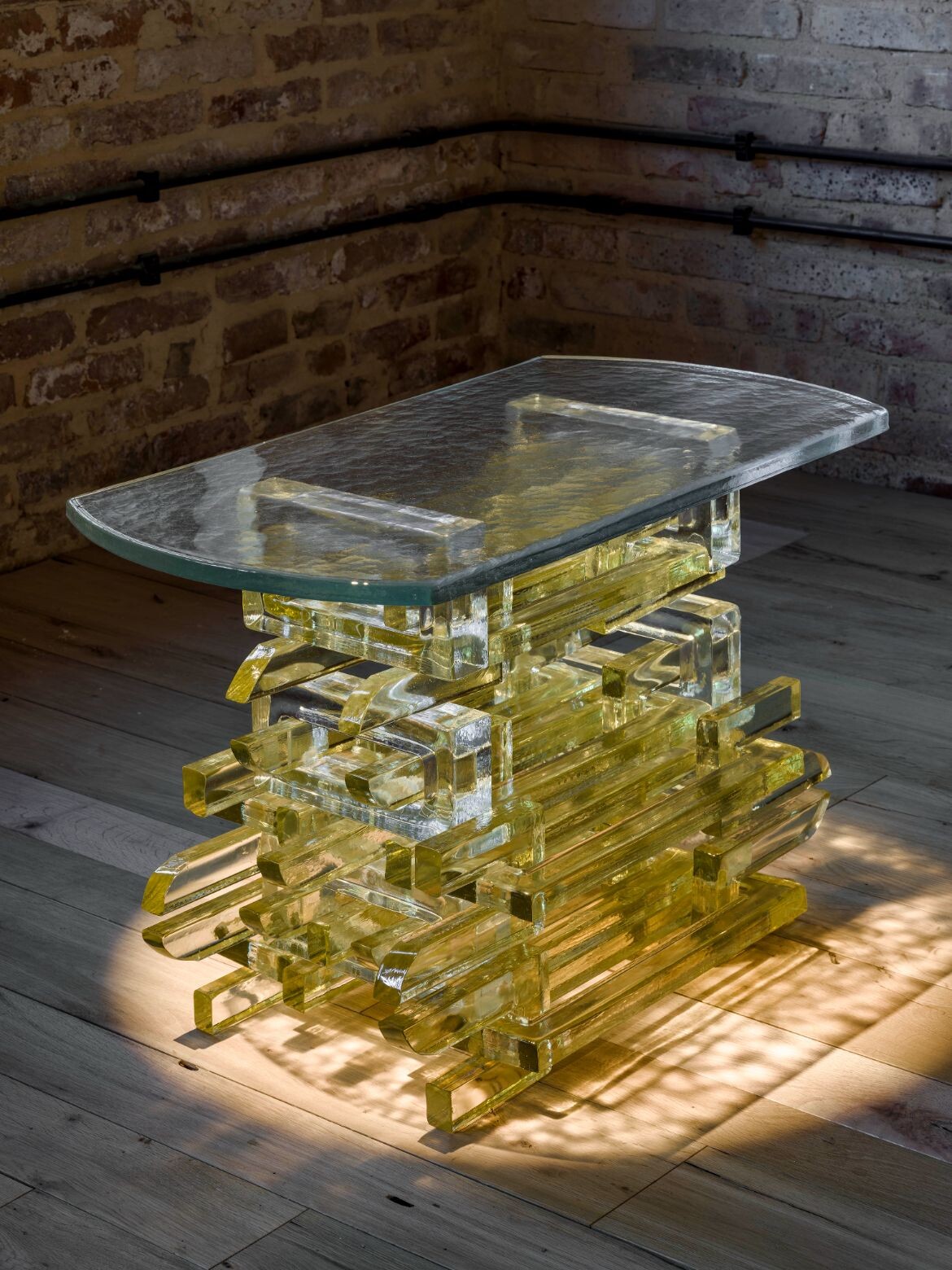
So during this early development, I was travelling a lot to Venice to visit their glassmakers; but I was also travelling back and forth to different parts of Asia, particularly China, Korea and Japan. For some reason, the cast glass presented itself as the best way for me to digest all of the beautiful architectural qualities I encountered.
When I was in Japan, I really loved that there were these markets right near the shrines. It was a double-dip of greatness! Ultimate flea and ultimate architecture. I also visited Naoshima and was struck by this piece by Hiroshi Sugimoto, a wooden shrine with cast glass steps – an interaction between a historical artist and a contemporary artist. I loved the wrinkles in the glass when it was being poured into moulds, a bit like the skin on custard. That image always stuck with me, and I wanted to make a reference to these kinds of structures.
That was the beginning of Chain. And like the architecture I was discovering, I wanted the piece to have no joints – just interlocking sections. I remember seeing these ring-shaped moulds at WonderGlass and liked the idea of redeveloping and working the concept around an abstraction of these pieces. It had the possibility of interlocking when you cut it, creating that architectural detail of painting the edges. In the end, it was a mix of references, an abstraction of links. And that’s why, in the end, we decided to call it Chain.
The first iteration was in a very soft yellow. When we re-editioned it, Christian Mussati remembered I had been very fond of these samples where the colour was threaded through, floating and suspended. This was perfect for the re-edition because it allowed me to add that layer back in, connecting the piece back to Venice and its blue canals and green seaweeds tangling among chains and ropes.
Bethan Laura Wood
bethanlaurawood.com
Laguna Chain is currently on view in Venice for WonderGlass’s exhibition coinciding with Venice Biennale and Venice Glass Week: The Brick House.
The NGV X MECCA Women In Design Commission by Bethan Laura Wood opens at the NGV in December 2023.
